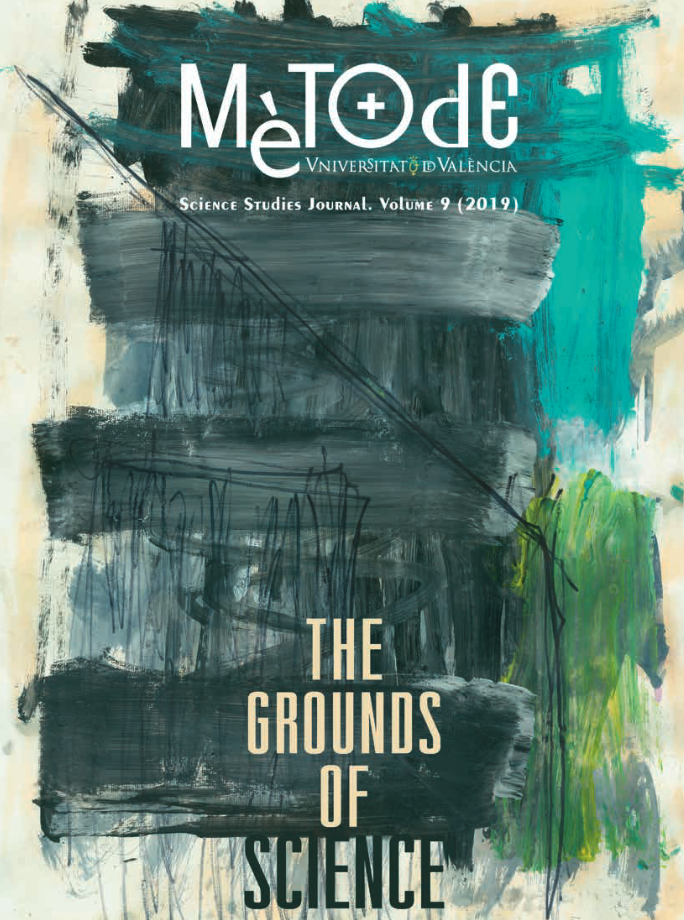The human-computer connection: An overview of brain-computer interfaces
DOI:
https://doi.org/10.7203/metode.9.12639Keywords:
brain-computer interfaces, brain signal processing, machine learning, robotics, rehabilitation Abstract
Abstract
This article introduces the field of brain-computer interfaces (BCI), which allows the control of devices without the generation of any active motor output but directly from the decoding of the user’s brain signals. Here we review the current state of the art in the BCI field, discussing the main components of such an interface and illustrating ongoing research questions and prototypes for controlling a large variety of devices, from virtual keyboards for communication to robotics systems to replace lost motor functions and even clinical interventions for motor rehabilitation after a stroke. The article concludes with some insights into the future of BCI.
 Downloads
Downloads
 References
References
Biasiucci, A., Leeb, R., Iturrate, I., Perdikis, S., Al-Khodairy, A., Corbet, T. A., … Millán, J. d. R. (2018). Brain-actuated functional electrical stimulation elicits lasting arm motor recovery after stroke. Nature Communications, 9, 2421. doi: 10.1038/s41467-018-04673-z
Birbaumer, N., Ghanayim, N., Hinterberger, T., Iversen, I., Kotchoubey, B., Kübler, A., … Flor, H. (1999). A spelling device for the paralysed. Nature, 398(6725), 297–298. doi: 10.1038/18581
Carslon, T., & Millán, J. d. R. (2013). Brain-controlled wheelchairs: A robotic architecture. IEEE Robotics and Automation Magazine, 20(1), 65–73. doi: 10.1109/MRA.2012.2229936
Carmena, J. M. (2013). Advances in neuroprosthetic learning and control. PLOS Biology, 11(5), e1001561. doi: 10.1371/journal.pbio.1001561
Chavarriaga, R., Sobolewski, A., & Millán, J. d. R. (2014). Errare machinale est: The use of error-related potentials in brain-machine interfaces. Frontiers in Neuroscience, 8, 208. doi: 10.3389/fnins.2014.00208
Chavarriaga, R., Ušćumlić, M., Zhang, H., Khaliliardali, Z., Aydarkhanov, R., Saeedi, S., … Millán, J. d. R. (2018). Decoding neural correlates of cognitive states to enhance driving experience. IEEE Transactions on Emerging Topics in Computational Intelligence, 2(4), 288–297. doi: 10.1109/TETCI.2018.2848289
Collinger, J. L., Wodlinger, B., Downey, J. E., Wang, W., Tyler-Kabara, E. C., Weber, D. J., … Schwartz, A. B. (2013). High-performance neuroprosthetic control by an individual with tetraplegia. Lancet, 381, 557–564. doi: 10.1016/S0140-6736(12)61816-9
Hochberg, L. R., Bacher, D., Jarosiewicz, B., Masse N. Y., Simeral, J. D., Vogel, J., & Donoghue, J. P. (2012). Reach and grasp by people with tetraplegia using a neurally controlled robotic arm. Nature, 485, 372–375. doi: 10.1038/nature11076
Leeb, R., Tonin, L., Rohm, M., Desideri, L., Carlson, T., & Millán, J. d. R. (2015). Towards independence: A BCI telepresence robot for people with severe motor disabilities. Proceedings of the IEEE, 103(6), 969–982. doi: 10.1109/JPROC.2015.2419736
Millán, J. d. R., & Carmena, J. M. (2010). Invasive or noninvasive: Understanding brain-machine interface technology. IEEE Engineering in Medicine and Biology Magazine, 29(1), 16–22. doi: 10.1109/MEMB.2009.935475
Perdikis, S., Tonin, L., Saeedi, S., Schneider, C., & Millán, J. d. R. (2018). The Cybathlon BCI race: Successful longitudinal mutual learning with two tetraplegic users. PLOS Biology, 16(25), e2003787. doi: 10.1371/journal.pbio.2003787
Raspopovic, S., Capogrosso, M., Petrini, F. M., Bonizzato, M., Rigosa, J., Di Pino, G., … Micera, S. (2014). Restoring natural sensory feedback in real-time bidirectional hand prostheses. Science Translational Medicine, 6(222), 222ra19. doi: 10.1126/scitranslmed.3006820
Ron-Angevin, R., Velasco-Álvarez, F., Fernández-Rodríguez, A., Díaz-Estrella, A., Blanca-Mena, M. J., & Vizcaíno-Martín, F. J. (2017). Brain-computer interface application: Auditory serial interface to control a two-class motor-imagery-based wheelchair. Journal of NeuroEngineering and Rehabilitation, 14(1), 49. doi: 10.1186/s12984-017-0261-y
Sellers, E. W., Ryan, D. B., & Hauser, C. K. (2014). Noninvasive brain-computer interface enables communication after brainstem stroke. Science Translational Medicine, 6(257), 257re7. doi: 10.1126/scitranslmed.3007801
Vansteensel, M. J., Pels, E. G. M., Bleichner, M. G., Branco, M. P., Denison, T., Freudenburg, Z. V., … Ramsey, N. F. (2016). Fully implanted brain-computer interface in a locked-in patient with ALS. New England Journal of Medicine, 375, 2060–2066. doi: 10.1056/NEJMoa1608085
Downloads
Published
How to Cite
-
Abstract2684
-
PDF1041
Issue
Section
License
![]()
All the documents in the OJS platform are open access and property of their respective authors.
Authors publishing in the journal agree to the following terms:
- Authors keep the rights and guarantee Metode Science Studies Journal the right to be the first publication of the document, licensed under a Creative Commons Attribution-NonCommercial-NoDerivatives 4.0 International License that allows others to share the work with an acknowledgement of authorship and publication in the journal.
- Authors are allowed and encouraged to spread their work through electronic means using personal or institutional websites (institutional open archives, personal websites or professional and academic networks profiles) once the text has been published.





